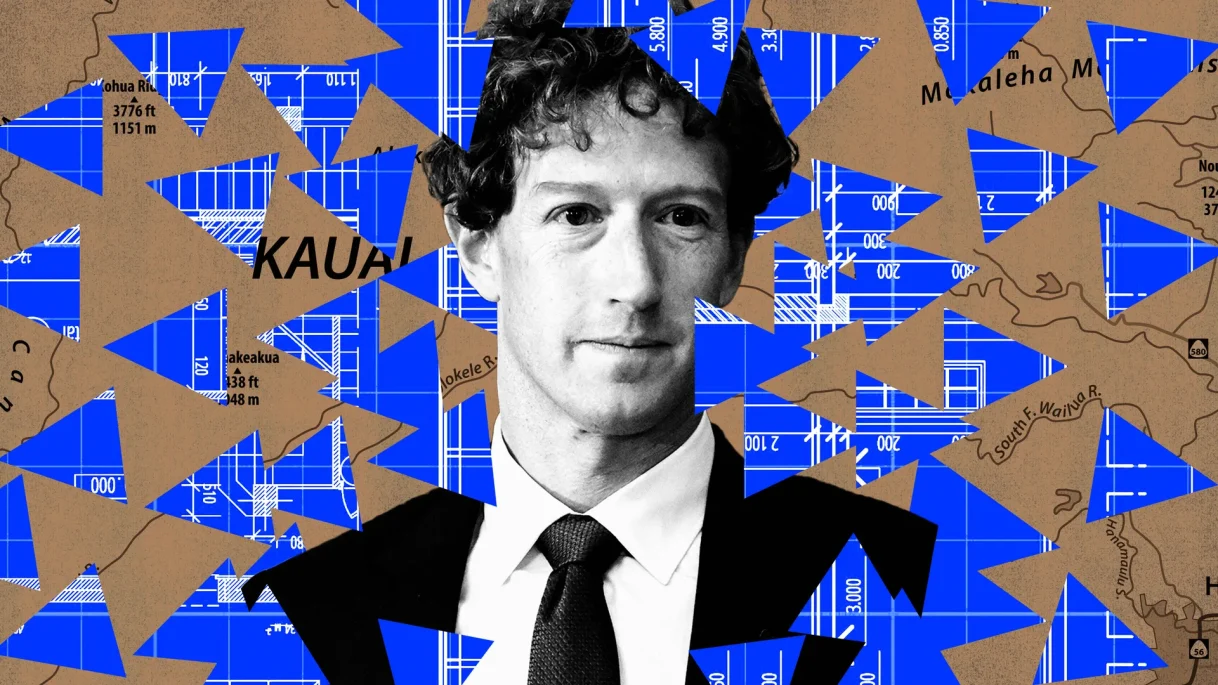Views: 116
Kauai, Hawaii — As Meta CEO Mark Zuckerberg continues to develop his sprawling multi-million-dollar compound on the island of Kauai, new revelations have surfaced about the land’s deep cultural significance—and the tensions it’s causing with the local community.
A Family Burial Site Beneath Billion-Dollar Plans
Julian Ako, who grew up visiting his maternal great-grandfather’s home near Pilaa Beach, recalls gathering seaweed and fishing along the reef. That cherished land, now part of Zuckerberg’s vast Kauai holdings, is also the resting place of Ako’s great-grandmother and her brother. After months of negotiations with Zuckerberg’s representatives, Ako gained access to the property and successfully registered the family graves with Hawaii’s Department of Land and Natural Resources.
The agency’s report further confirms the likelihood of additional ancestral burial sites on the property, based on oral histories from local families. Ako, a member of the Oahu Island Burial Council, remains concerned about the future of these sacred sites amid the secrecy surrounding Zuckerberg’s compound.
The Challenge of Secrecy and Worker NDAs
Construction workers on the property are reportedly bound by strict nondisclosure agreements, limiting what they can share about the development. “If workers uncover iwi—or bones—it’s going to be difficult for that information to reach the public,” Ako says. Zuckerberg’s team confirms that they fenced off and maintain the burial sites since learning of their existence in 2015 and that workers must comply with reporting regulations for any accidental discoveries.
A Massive and Mysterious Expansion
Recent public records and satellite images reveal Zuckerberg’s compound is far larger and more complex than previously known. In early 2025, Zuckerberg acquired an additional 962 acres of prime ranchland just across the road from his original holdings, increasing his total Kauai landownership to over 2,300 acres—making him one of Hawaii’s largest private landowners.
The compound features opulent mansions, guest houses with up to 16 bedrooms each, security cameras, keypad locks, and even an underground bunker the size of an NBA basketball court. New construction projects include multiple large buildings costing millions, designed for short-term guest housing and staff accommodations.
From Ranching to Controversy
Zuckerberg has publicly shared plans to raise cattle fed on beer and macadamia nuts, farm organic crops, and restore native plants and endangered species on the land. The compound is reportedly dedicated largely to agriculture and conservation, with prior plans for luxury housing canceled after Zuckerberg’s purchase.
However, local residents express mixed feelings. While Zuckerberg’s donations to nonprofits and job creation are welcomed, many fear that the influx of billionaire-owned estates is transforming the island’s character. Kauai housing prices have surged, driven partly by wealthy mainland buyers and pandemic migration, putting homeownership out of reach for many locals.
Puali‘i Rossi, professor of Native Hawaiian studies at Kauai Community College, voices concern:
“If our island has any hope of remaining Hawaii, this kind of activity has got to stop. Eventually, Hawaii won’t look like Hawaii anymore — it will become a resort community.”
A History of Legal Struggles Over Land
Zuckerberg’s initial 2014 purchase of 700 acres near Kilauea was complicated by existing kuleana rights—traditional land access and ownership rights held by descendants of native Hawaiians. After filing “quiet title” lawsuits to consolidate ownership, Zuckerberg faced public backlash and eventually withdrew the legal actions, supporting a local descendant who ultimately secured sole ownership of contested parcels.
Since then, Zuckerberg has continued to buy additional parcels, including lands near popular beaches and a site with a tragic history—the Kaloko Dam, which collapsed in 2006.
What’s Next for Kauai?
As Zuckerberg’s compound grows to unprecedented scale, locals and cultural advocates watch closely, balancing hope for economic benefits with concerns over cultural preservation, land access, and community identity.
Inside the gates, guarded by stone walls and tight security, construction continues quietly. But outside, the questions linger: How will this massive private estate impact Kauai’s future? And what happens to the sacred histories buried beneath the new foundations?

